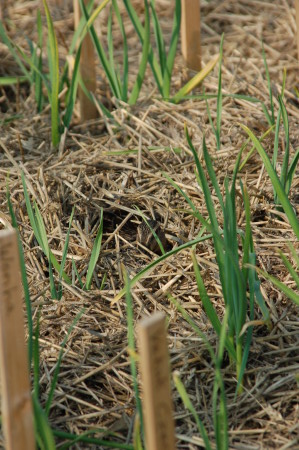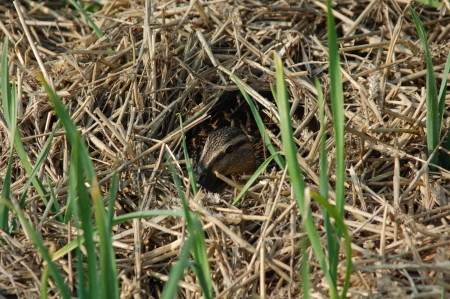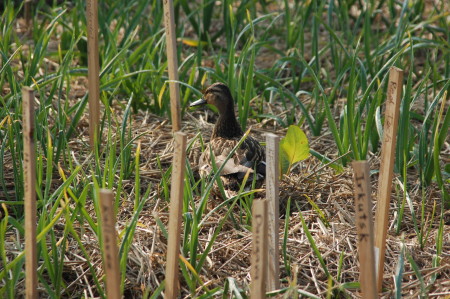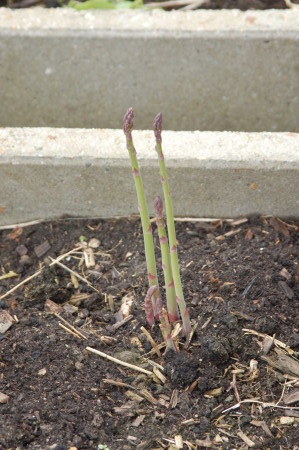I recently came across this Fruit and Vegetable Guide in Dutch (intended to be printed out and folded for easy reference while you are shopping), made by Dutch food organization Weet Wat Je Eet (WWJE) (Know What You’re Eating), and I thought the information in it was interesting enough to take a stab at a translation. Of course the information is firstly most interesting for Dutch people, then for people living in Europe, but there is some more general stuff as well. We do live in the age of the global marketplace. It’s the kind of thing that those of us who buy fruit and vegetables from the supermarket should really be thinking about.
As well as buying certified organic products, another good way of choosing your supermarket produce is according to what usually has high levels of pesticides. For example, if you know bell peppers (in particular from Spain) are normally high in pesticides it might be a good idea to look for organic bell peppers. On the other hand, there may not be a lot of point looking for organic cabbage, because this doesn’t normally have a lot of pesticide residue anyway.
[begin translation]
Fruit and Vegetable Guide
Don’t take a risk!
As consumers we consume chemical pesticides residues every day. WWJE found 14 different residues in a box of strawberries. Is this bad?
It’s certainly something to be concerned about. Scientific studies show even small amounts of these chemicals can still be bad for our health. Combinations of pesticides are also a special risk.
Children? Pregnant? Don’t take a risk! Eat sufficient quantities of fruits and vegetables, this is important for your health. In particular for born or unborn children, choose food you know is safe. Growing children who are exposed to too many agricultural poisons can have learning and attention problems, as well as neurological and developmental problems. Therefore, don’t take a risk and always buy clean fruits and vegetables.
How do I buy fruits and vegetables without chemical residues?
Fruits and vegetables are delicious and healthy, especially if they contain little or no agricultural chemical residues. Unfortunately you can’t see these chemicals. How do you know if produce is clean? This Fruit and Vegetable Guide will give advice for this. Take it with you in your wallet or purse!
1. Choose Organic – [the guide then gives some information about what the EKO (Europen Certified Organic) means and how to find stores that sell certified produce in the Netherlands]
2. Choose the right Supermarket – [The guide then gives some advice on which supermarkets sell produce with the lowest pesticide residues in the Netherlands, according to WWJE tests]. The green stripe is the number of products tested that didn’t have any residues. The red are the products that did contain residues. The red circle with the slash were the number of products where the residues were above legal standards, and the skull and crossbones shows levels that represented health risks.
3. Choose Dutch produce – The Duch food authorities tested produce in 2007 and found 2% contained residues above legal levels. For other countries in and outside of the EU on average this was 10%. In particular produce from Turkey, Italy and Spain were regularly seriously contaminated. In addition, since combinations of pesticides can pose a special risk, it should be noted that products from Turkey contained on average 4 different chemicals, while Dutch products contained on average 1.3 different chemicals. Our advice: buy Dutch products.
4. Choose clean products. Research by the Dutch food authority has shown that some types of fruits and vegetables are normally clean, while others are normally contaminated with residues. In the table you can see which are the cleanest and dirtiest. It should be noted that in general vegetables are cleaner than fruits. For children and pregnant women our advice is: choose the cleanest types. If you want to eat mandarines or grapes, buy organic!
Fruit
Cleanest
- Kiwi
- Passion Fruit
- Plums
- Bananas
- Papaya
Dirtiest
- Grapes
- Mandarines
- Lemons
- Strawberries
- Oranges
Vegetables
Cleanest
- Green Cabbage
- Red Cabbage
- Asparagus
- Cauliflower
- Onions
Dirtiest
- Cucumber
- Bell Peppers (especially from Spain!)
- Leaf Lettuce
- Iceburg Lettuce
- Endive
The law does not offer enough protection. Unfortunately what is legal and what is safe are not the same thing. It happens often that foods are legal, but according to international norms are unhealthy. WWJE therefore holds supermarkets to stricter rules, as long as the laws are not sufficient. A number of supermarkets in Germany have adopted their own stricter standards than what the law requires.
[It then goes on to explain their ongoing campaign in the Netherlands, and gives websites to look for more information]





